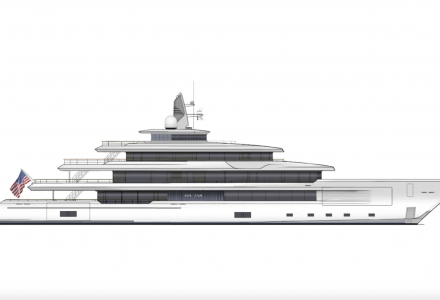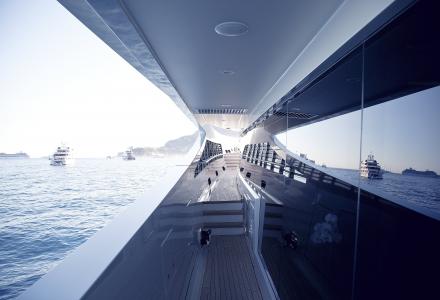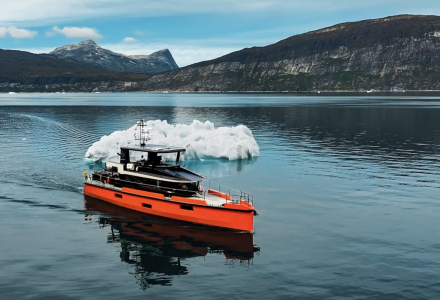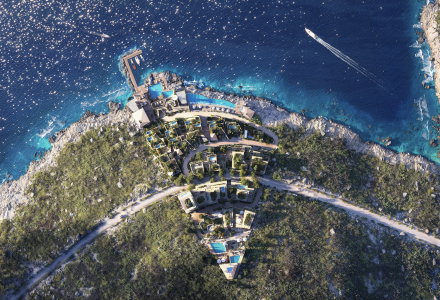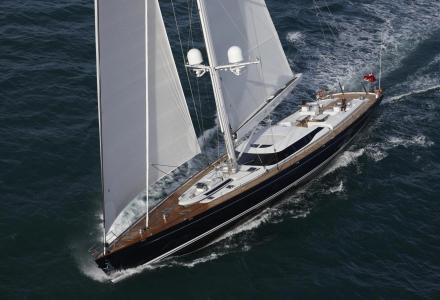The Concept
The Seataci is yacht concept that uses a biomimetic propulsion system resembling the movement of whale’s tail. Its main hull would be lowered underwater, providing passengers with an excellent underwater view of the coral reefs and marine life. It features a dozen villas and two landing pads specially designed for personal flying drones.
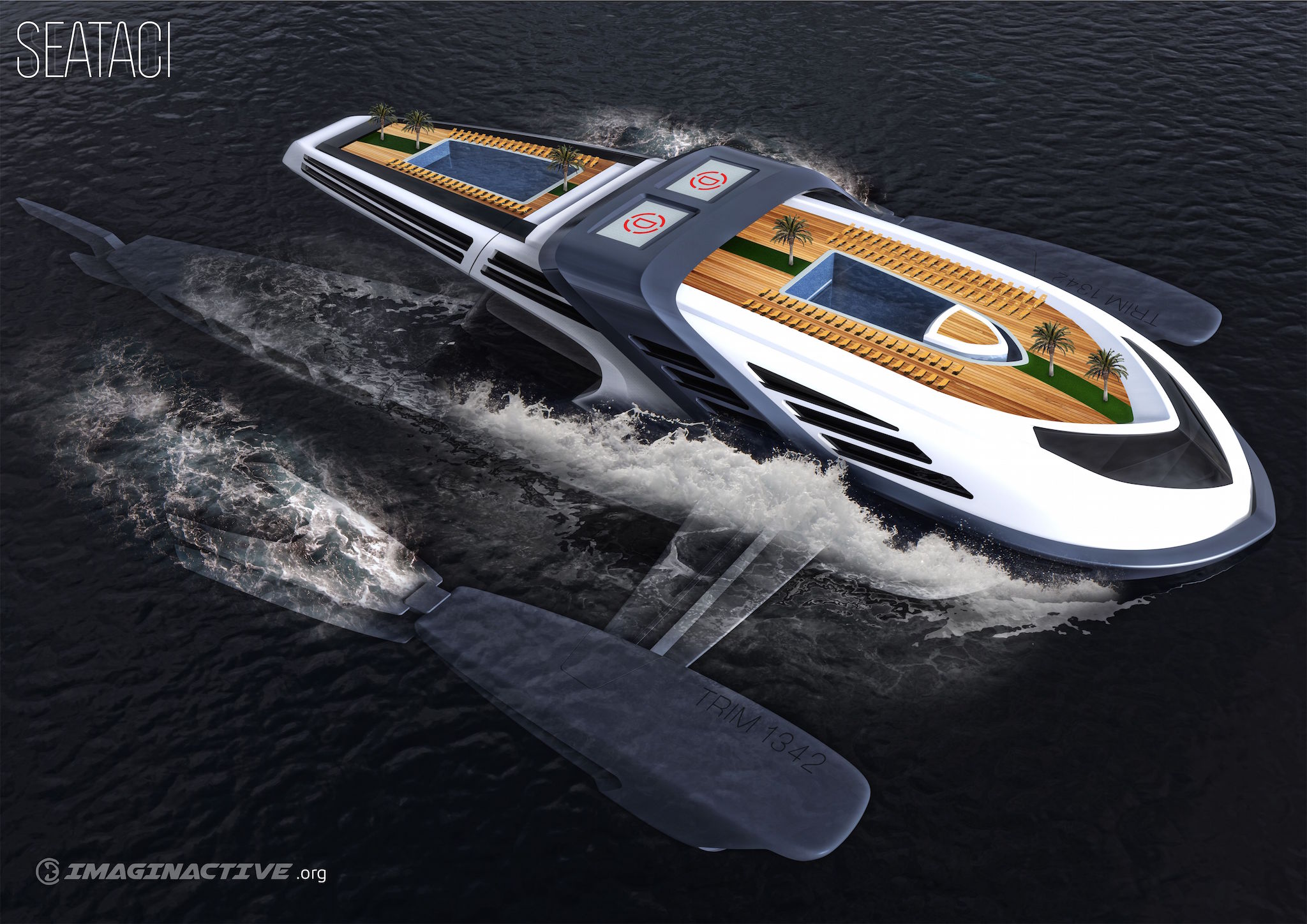
Origin of the idea
The idea for the Seataci first came to me while my wife and I were visiting the St. Regis resort in Bora-Bora. We were scuba diving one of the channels, and I started thinking about a new type of cruise ship concept capable of navigating in shallow waters by using an eco-friendly propulsion system. First I had in mind a commercial type of vessel, but it could probably first be developed as an experimental / scientific yacht that would bring together scientists and their benefactors.
How it works
The Seataci would be capable of submerging itself by using a water ballast system to sink its main hull. Two side pods would be used to stabilise the ship, and they would be linked with a hydraulic system that would also double as a dynamic suspension. The ship’s crew and passengers would be able to travel to those pods at any time during the cruise, and passengers could use them as galleries to get a different viewpoint from the ship.
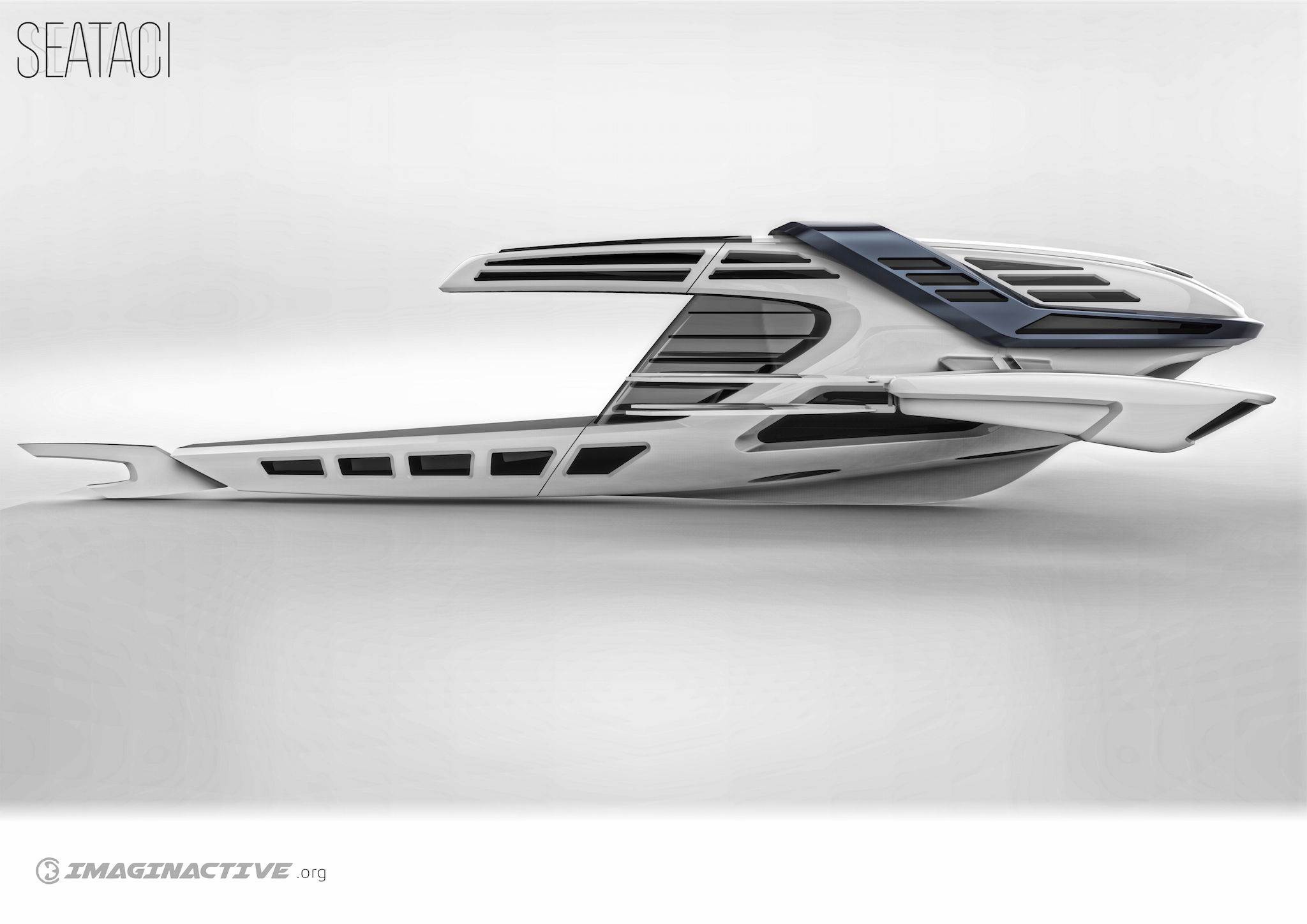
The ship’s engines would be housed in each pod. A biomimetic propulsion system similar to the Iruka concept would be designed to propel the Seataci. This system is basically an oscillating foil that pushes the water like the tail of a whale. It might prove more efficient than propellers, would probably generate less noise under water, and it would allow the ship to sail in shallower waters without breaking its propellers or rudders.
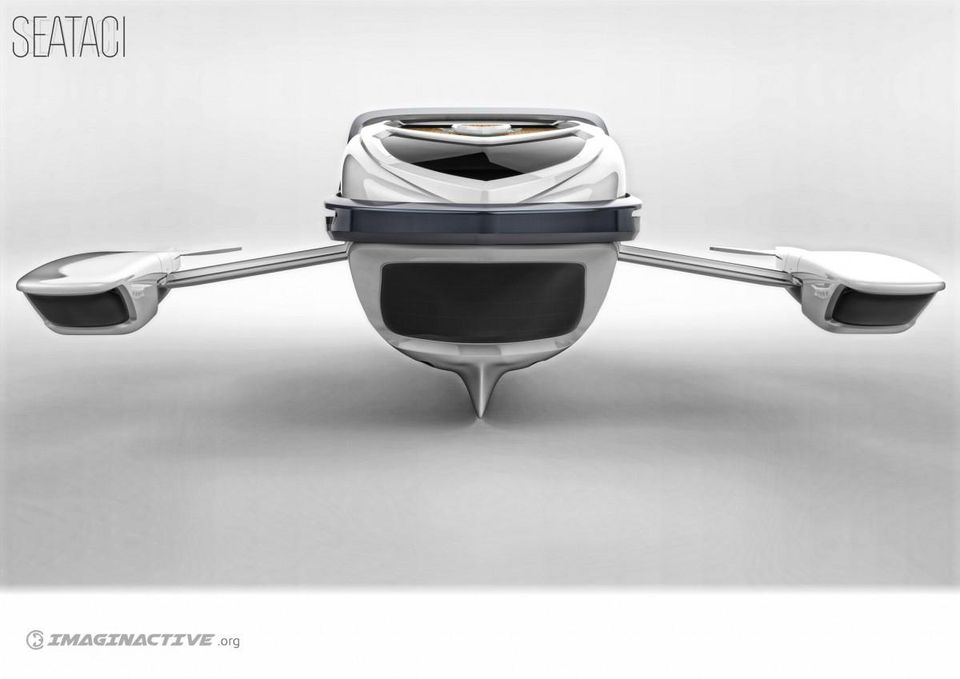
Each pods would feature enclosed water propeller that would siphon water from side intake grills and push it forward when the vehicle needs to back up, like reverse bow thrusters. Another option would be to integrate a pivot around the pods vertical axis to reverse the ship’s course.
As you can see, the boat’s actual hull occupies a lot of volume, so it will be hard to sink.
This is our first iteration, only meant to depict the idea. Future version of the Seataci should take into account weight, volume of water displaced, type of material, ballasts size etc. They would look different, but would propose the same features.

The lower tail section of the main hull would feature an impressive under water experience for the passengers, with large panoramic windows located on each side of the ship. Some of the ship’s suite could be located in that lower section for the view and for the minimal roll. A dining hall or an observatory lounge could also be installed there. On the main deck, a tropical garden would surround a pool next to landing pads for personal drone. The drones could be used by customers to fly to the shore or visit small ‘motu’ or ‘atolls’ nearby.
What It’s Used For
The Seataci is first and foremost a luxury yacht, but it could also be built and sold as a small scientific or commercial excursion ship. It would be interesting to use it to explore channels or islands located in shallow waters and witness the fascinating underwater life during each cruise. When personal drones become widely available and safe, the Seataci could serve as a landing platform to explore inhabited islands without using boats.

Integrating new technologies like the oscillating foil is probably a big risk; however it could provide a good payoff if this technology proves to be more sustainable than what is currently being used.
The Designer
I would like to thank Martin Rico, who created the images of the Seataci concept. Martin lives near Buenos Aires, Argentina. He studied Design at the University of Buenos Aires and now works as a Freelance Industrial Designer. Martin also created the images of the Mercuri personal jet and the Sandofi urban cart for the homeless.

